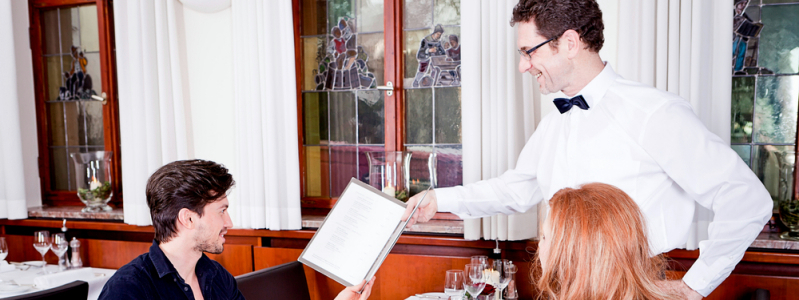You know that feeling when you go to a restaurant with your husband or your boyfriend and the server comes right over and shoots you a nice smile and then gives the wine list to your guy? Even though you, too, are a person who may have her own taste and her own thoughts about which bottle to get? Even though you may be the one picking up or splitting the tab? I call it being cork-blocked, and there are few things in life I find more frustrating.
Don’t get me wrong: on the grand scale of challenges American women face, from unequal pay to Congressmen who are certain they know what’s best for our feminine health, being looked down upon by sommeliers is a very, very small problem. But it also somehow neatly captures a lot of what’s wrong about the way society still treats women, and because I like a Cabernet Franc or two after a long day at work, it’s a problem I come up against all too often.
Put bluntly, the problem is this: Big Wine, a $36 billion industry, continues to treat women like slow-witted toddlers, even though we purchase nearly eight out of every ten bottles of wine sold in this country.
You see this patronizing attitude everywhere. Often, it begins with the bottles themselves. Next time you’re in a wine store, take a quick stroll around and see if you can spot the bottles that are marketed specifically for women. Sure you can: they’ll be the ones with shocking pink labels, or with some cutesy name that connotes something simple and innocent, or with some reference to low calories. Don’t get me wrong—I’m a big fan of design, and believe a sexy exterior is an important part of any product. But I’m not seven years old, and I don’t buy things just because I think they have a pretty picture, so I don’t need everything to be very pink and very simple.
I also don’t want anyone to assume, as nearly all wine publications do when they write their little “women and wine” pieces, that my only experience with wine is chugging Sauvignon Blanc alone at home at night to dull the edge of a rough day with the kids or sipping Chardonnay with my girlfriends as we engage in some Oprah-esque teary gossip-fest. First, because I am, you know, a human freakin’ being, I have my own mind and my own taste, and, like most women, I like all kinds of wine, from a delicate bubbly to big and bold reds. And because I am a human being, I drink my wine the way humans, men and women alike, do, over dinner or after work, having normal conversations with normal people. I don’t use my wine glass as a crutch or a receptacle for my tears, and I’d love it very much if every other piece of writing about wine geared for women stopped assuming that I did.
That, however, still wouldn’t solve the problem of what happens when I walk in to a store to buy a bottle of wine. Look, I’m not a professionally trained sommelier; I couldn’t compete in a blind tasting and tell you that the wine I was smelling came from grapes that enjoyed a southern exposure and a soil grazed by virginal cows (although why would I want to in the first place). But I drink wine often, and I’m smart enough—and care about wine enough—to know what I like and know how to describe it. I like to ask questions and have conversations, which I believe is a very good way of going through life. But when I try to ask the dude at the wine store a basic freakin’ question, what I usually get is a lecture, frequently one that assumes that I’m a wide-eyed ingénue who, never having tasted a drop of wine, wandered in to the store, amazed by all them pretty green bottles lined up so neatly together.
So let’s stop all this nonsense. Let’s have retailers insist that their employees talk to all customers, regardless of gender, like adults, take the time to engage in conversation, and give each customer the advice he or she is asking for. Let’s have producers drop the ridiculous notion that there is, or should be, such a thing as “wine for women,” and that this wine should come in bottles that look like props from the set of Legally Blonde. And let’s have restaurants remember that when two people walk in and sit down, the one wearing boxers isn’t necessarily the one calling the drinking shots, and that the easiest and most respectful thing to do is simply ask who’d like to look at the wine list.
The same advice goes for practically every other industry, most of which are guilty of the same stupid sins. But me, I’m a wine person, and although I’m no sommelier, I don’t have to sniff any glasses of wine to know that even the best aroma is ruined when served with heaping mounds of bullshit.
Header image via Shutterstock.com

